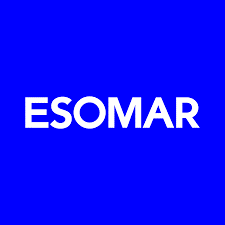The ICC/ESOMAR International Code on Market, Opinion, and Social Research and data Analytics identifies three fundamental principles for researchers. The first one focuses on transparency:
Further, Article 7 of the Code outlines that transparency is necessary in relation to research design, results, interpretation of data, data quality checks, technical information, and reporting.
For many companies, being transparent feels difficult to implement. How transparent do you need to be? How can you be transparent without revealing proprietary information and giving away all of your company secrets?
Fortunately, we’ve figured out the perfect recipe for those who want to understand what it means to be transparent and still retain proprietary information. It comes in the form of, you guessed it, a recipe.

Much like marketing research, recipes are extremely detailed instructions on how to create a very specific result. Let’s consider Grampa’s Super Secret Pound Cake recipe. His recipe includes precise measurements of specific ingredients, along with detailed rules of how those ingredients are to be combined and processed to produce an exact outcome.
Now, Grampa doesn’t want any of his competitors to be able to make his pound cake but he does want everyone visiting his booth at a bake sale to know that this is the best quality pound cake to have ever existed. So how can he can talk about his recipe without giving away his secrets?
He can tell people that there are six ingredients. He can even share that those ingredients are butter, flour, sugar, eggs, vanilla, and salt. How is this relevant to researchers? Well, we too have ingredients. We can tell people our ingredients are human research participants, or data points from transactional records, or comments from social media networks.
Grampa can tell people he buys his ingredients at a major grocery retail chain whose clients include millions of Canadians across the country. For researchers, our ingredients, our sample source could be a national, marketing research company that specializes in recruiting research participants in Canada. Or, it could be a firm that specializes in collecting transactional, behavioural, or social media data.
Grampa can tell people that he measures the ingredients in teaspoons, ounces, milliliters, and milligrams. He can even tell people that butter, flour, sugar and eggs make up the bulk of the ingredients, and salt and vanilla are minor ingredients. For researchers, we can talk about how our sampling matrix strives to achieve consistent percentages of gender, age, and region, and focuses less precisely on education, children, and language.
Grampa can also describe his method and order of combining ingredients. He can tell people the ingredients are measured, weighed, and mixed by hand in a bowl with a whisk, or by using AI and robots that automatically reach into cupboards and select, weigh, and mix ingredients. He can tell people that the processing algorithm requires the batter to be poured into a pan and baked, not fried or frozen, at a moderately high temperature. Similarly, researchers can share that their data are cleaned of satisficers and weighted to match census statistics. Or that AI selects data points based on frequency of reads, clicks, or downloads.

Should Grampa be worried that his secret pound cake recipe has been revealed? Of course not. Because while he’s been transparent about the ingredients, the processes, and the algorithms, he’s not revealed any proprietary information. The best bakers would completely understand how the recipe works and feel confident that it is high quality, but they would be unable to replicate it. Grampa’s secret remains safe.
And whether you focus on interviews, groups, surveys, biometrics, social data, transactional data or something else, it’s no different in the marketing research space. Transparency is simple if you’re open to embracing the concept.
Esomar’s 28 Questions To Help Buyers of Online Samples is a great place to start if you’re interested in being more transparent about your processes. We’d love to share our Esomar 28 Questions answers with you too. Please get in touch with us and ask for them!
You might like to read these:
- What if everything you’re doing to design a marketing research study is wrong?
- Is consumer recall of past purchases and behaviours fact or fake news?
- Conducting research is easy… if you understand hundreds of cognitive biases!

With nearly 40 years of experience, Canadian Viewpoint is a field and data collection company that specializes in English and French offline and online services. We offer sample, programming>, hosting, mall intercepts, pre-recruits, central location recruitment, mystery shopping, site interviews, IHUTs, sensory testing, discussion boards, CATI, facial coding, and other innovative technologies. Learn more about our services on our website. Canadian Viewpoint is a founding board member of CRIC (Canadian Research Insights Council) and named on both the 2019 GRIT Top 50 list of Emerging Players and Women in Research shortlist for Best Places to Work.
Follow us on Twitter or Linkedin, or sign up for our newsletter.



